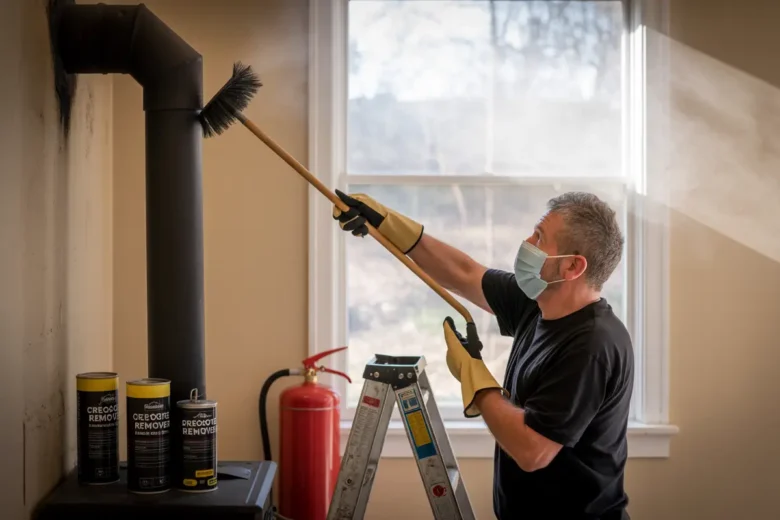A wood-burning stove can be a cozy and efficient way to heat your home—but only if it’s properly maintained. One of the most critical, yet often overlooked, aspects of stove care is keeping the stove pipe clean. Over time, residue like creosote can build up inside the pipe, posing serious fire hazards and reducing the stove’s performance.
So, how often should you clean your wood stove pipe? The answer depends on a few key factors, including how frequently you use your stove, the type of wood you burn, and whether your system has been inspected regularly. In this guide, we’ll walk you through why stove pipe maintenance matters, how to recognize signs of buildup, and how to keep your system safe—whether you’re a seasoned stove owner or just getting started.
Let’s dive in and make sure your stove is ready for safe, efficient heating all season long.
Why Wood Stove Pipe Maintenance Is Crucial
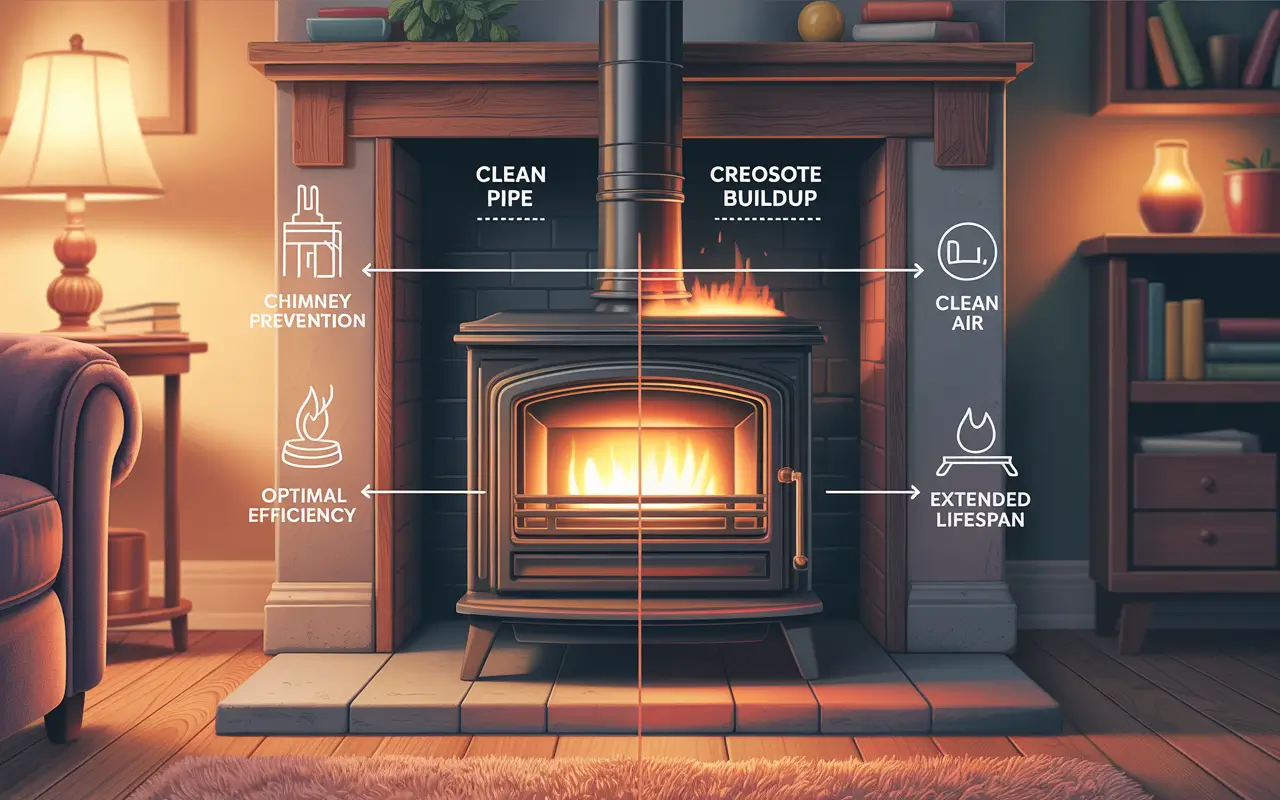
Proper stove pipe maintenance is more than just a seasonal chore—it’s a vital part of ensuring your wood stove remains safe, efficient, and long-lasting. Neglecting regular upkeep can lead to serious fire hazards and performance issues. Here’s why it matters:
🔥 Preventing Chimney Fires
One of the biggest risks of a neglected stove pipe is creosote buildup. Creosote is a highly flammable, tar-like substance that forms when smoke cools and condenses inside the pipe. According to the National Fire Protection Association (NFPA), chimney fires are a leading cause of house fires during the heating season—and creosote is often the culprit. Regular cleaning dramatically reduces this risk and keeps your home safer.
⚙️ Improving Efficiency
When your stove pipe is clean and unobstructed, your stove burns hotter and more efficiently. A clear path for airflow allows for proper combustion, which means you get more heat from less wood. Dirty or blocked pipes reduce draft and lead to sluggish, inefficient fires.
🌬️ Protecting Indoor Air Quality
A blocked or dirty stove pipe can cause smoke and harmful gases—like carbon monoxide—to back up into your home. Keeping your stove pipe clean helps maintain good indoor air quality and prevents exposure to dangerous fumes that could affect your family’s health.
🛠️ Extending Stove Lifespan
Creosote buildup and excessive heat from inefficient burning can degrade your stove pipe and flue system over time. Routine maintenance helps minimize wear and tear, reducing the risk of corrosion or cracks and extending the life of your wood stove setup.
Wood Stove Pipe Maintenance: How Often Should You Clean It?
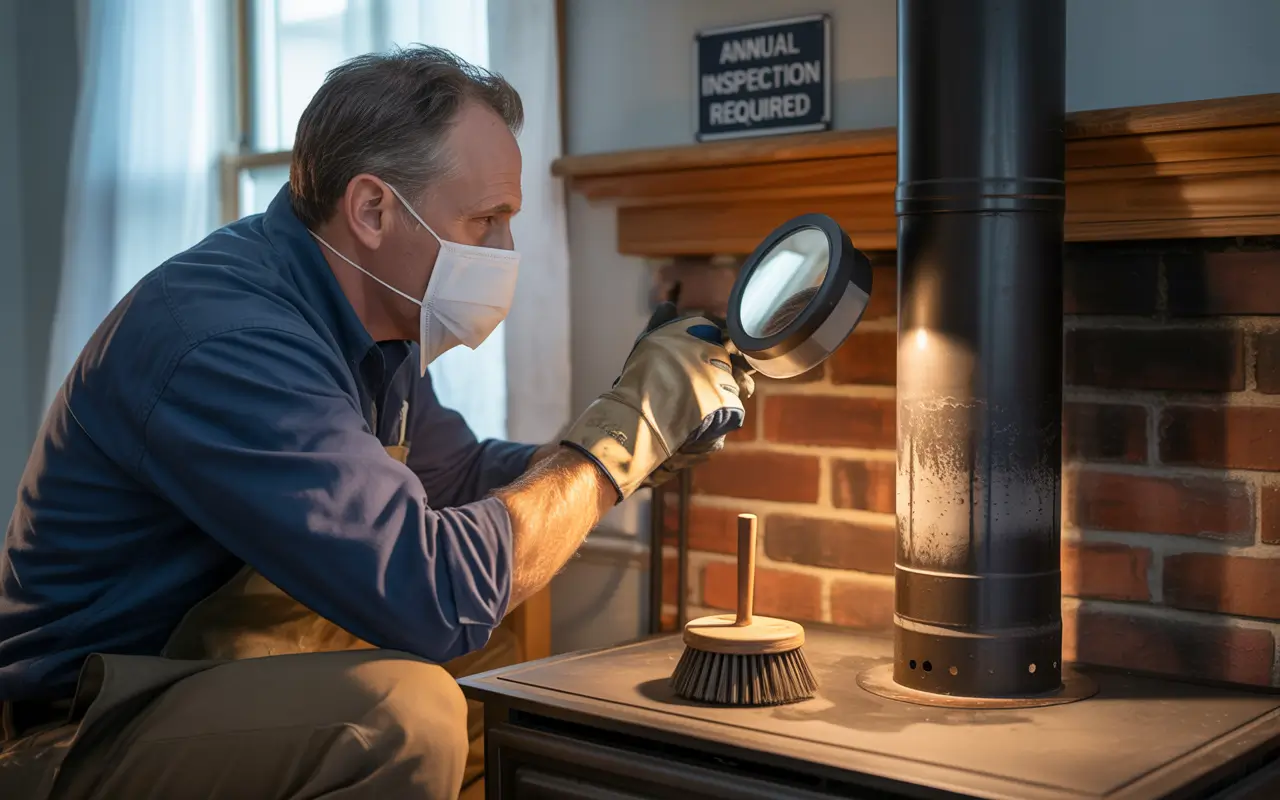
Keeping your wood stove pipe clean isn’t just a recommendation—it’s a safety necessity. The frequency of cleaning depends on how often you use your stove, the type of wood you burn, and seasonal factors. Here’s what experts and organizations like the Chimney Safety Institute of America (CSIA) and the National Fire Protection Association (NFPA) recommend:
🧽 General Cleaning Guidelines
The CSIA advises that chimneys, including stove pipes, should be inspected at least once a year and cleaned as necessary. The NFPA adds that even if you don’t use your stove frequently, creosote, bird nests, or other obstructions may still pose a risk. If you use your stove regularly, a cleaning every few months may be required.
🍂 Seasonal Considerations
-
Pre-Season: Always inspect and clean your stove pipe before the start of the heating season to ensure it’s clear and safe.
-
Mid-Season Checks: If you burn wood daily during winter, schedule a mid-season inspection and cleaning to prevent buildup that could cause blockages or fires.
🔁 Usage-Based Cleaning
Your cleaning schedule should also reflect how often the stove is used:
-
Daily Use: Clean the pipe every 1–2 months.
-
Occasional Use (a few times a week): Inspect every 3–4 months.
-
Rare Use: A once-a-year inspection may be enough, but still clean before winter.
⚠️ Signs It’s Time for a Cleaning
Don’t wait for a problem to occur. Watch for these warning signs:
-
A strong smoky odor when the stove is running
-
Poor draft or slow-burning fires
-
Visible black soot or creosote flakes in the firebox or pipe
-
Increased smoke inside the room when opening the stove door
Being proactive with your stove pipe maintenance not only reduces fire risk—it also ensures your stove runs efficiently throughout the heating season.
Tools and Products for Effective Cleaning
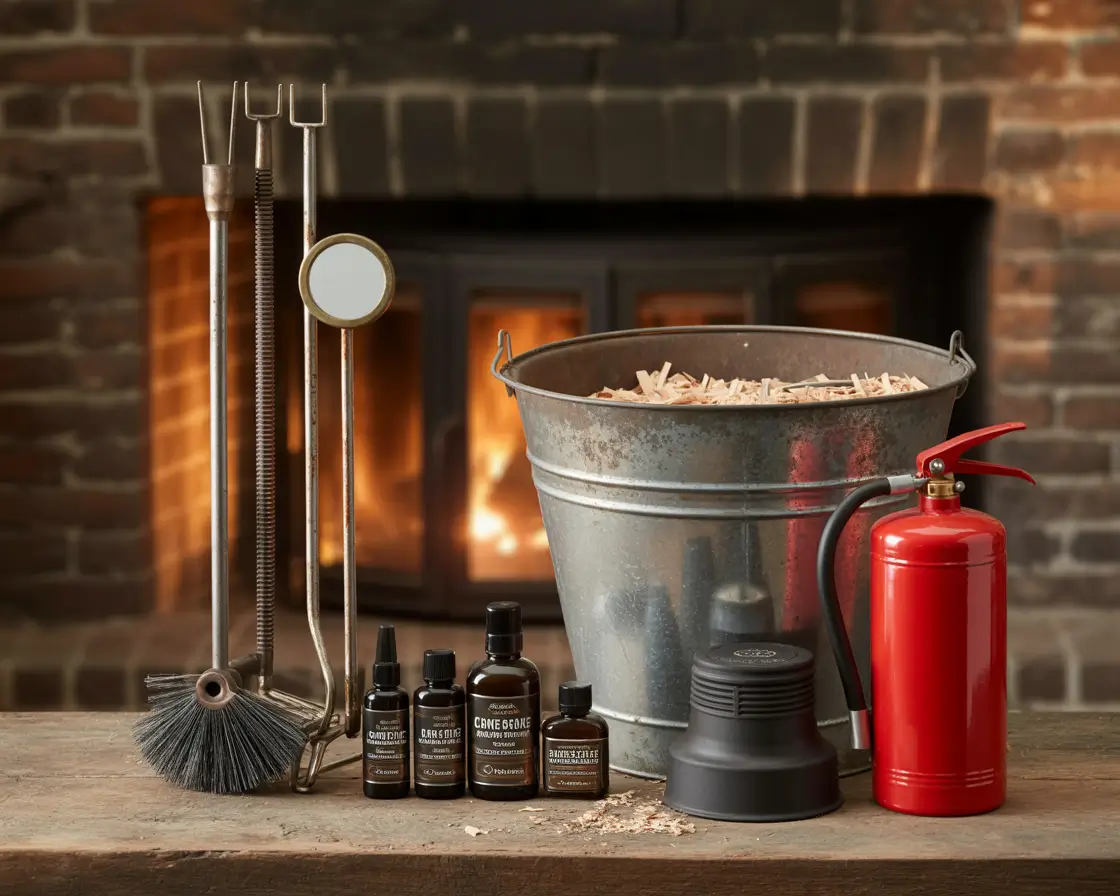
Having the right tools for the job can make stove pipe maintenance easier, safer, and more effective. Whether you’re a hands-on DIYer or just want to be informed before hiring a professional, these essential tools and products will help you keep your wood stove system in top condition.
🧹 Chimney Brush Kits
A chimney brush is the most important tool for stove pipe cleaning. Brushes come in different shapes and sizes—round, square, or rectangular—to match various flue designs. It’s crucial to choose a brush that fits your stove pipe diameter snugly without being too tight. Fiberglass or metal rods attach to the brush and allow you to scrub deep into the flue from either the top or bottom.
🔍 Inspection Mirrors & Rods
Before and after cleaning, use an inspection mirror and extendable rods to check for creosote buildup, obstructions, or damage. Mirrors with LED lights offer better visibility in dark or narrow pipes. Regular visual inspections help you catch issues early and avoid larger problems down the line.
🧪 Creosote Removers
There are two main types of creosote removers:
-
Chemical-based removers: These products break down creosote through combustion or application. They are effective but should be used carefully and per manufacturer instructions.
-
Natural or enzymatic cleaners: Made from less toxic compounds, these work more slowly but are safer for indoor use and environmentally friendly.
Using a creosote remover after brushing helps minimize buildup between major cleanings.
🛡️ Chimney Caps and Fire Extinguishers
Chimney caps prevent rain, snow, animals, and debris from entering the flue, reducing the chance of blockages and corrosion. Meanwhile, a fire extinguisher is a must-have safety tool. Keep one rated for wood fires (Class A) near your stove, and inspect it regularly to ensure it’s charged and accessible.
DIY vs. Professional Cleaning and Inspections
While regular maintenance is key to keeping your stove pipe safe and efficient, the question remains: should you handle the cleaning yourself, or hire a professional? There are pros and cons to both, and understanding the benefits of each option will help you make the best decision for your home.
🔧 When to Call a Certified Chimney Sweep (CSIA)
Hiring a Certified Chimney Sweep (CSIA) is the gold standard for stove pipe cleaning. A professional chimney sweep has the experience and tools to thoroughly clean the pipe, inspect for safety hazards, and identify potential issues that might not be obvious to an untrained eye. Annual professional inspections are crucial, especially if your stove is used frequently or if your system has been damaged in the past. Not only does this reduce the risk of chimney fires, but it also ensures that the stove pipe system is functioning optimally and safely.
🏡 DIY Maintenance Tips
If you’re comfortable with basic home maintenance, you can handle routine cleaning and inspections yourself using a chimney brush kit. Here are a few tips for safe DIY maintenance:
-
Use the right tools: Choose a brush that fits your pipe’s diameter and ensure your rods are securely connected.
-
Wear protective gear: Gloves, goggles, and a mask will protect you from soot and creosote particles.
-
Inspect the pipe: Before and after cleaning, use an inspection mirror to check for cracks or other signs of damage.
-
Regular cleanings: For those who use their stove regularly, clean your pipe at least once a year, or more often if needed.
⚠️ Common Mistakes to Avoid
There are some common mistakes to watch out for when cleaning your stove pipe, whether you’re doing it yourself or overseeing the process:
-
Incomplete cleaning: Failing to clean all areas of the stove pipe can lead to hazardous buildup, especially in corners and tight spaces.
-
Burning wet wood: Wet wood produces more creosote, which can cause faster buildup and inefficient burning.
-
Skipping inspections: Even if you regularly clean your stove pipe, it’s crucial to have an expert inspect the system for cracks, rust, or other risks.
⚖️ Legal and Insurance Considerations
Many insurance policies require proof of regular chimney maintenance and inspections. Keeping records of your professional cleaning appointments can help ensure you meet your insurance policy requirements. Furthermore, in the case of an incident like a chimney fire, having documentation of annual inspections can be important for liability and claims. Always keep a copy of receipts and maintenance reports for future reference.
Wood Stove Pipe Maintenance Tips to Reduce Creosote Buildup and Fire Risk
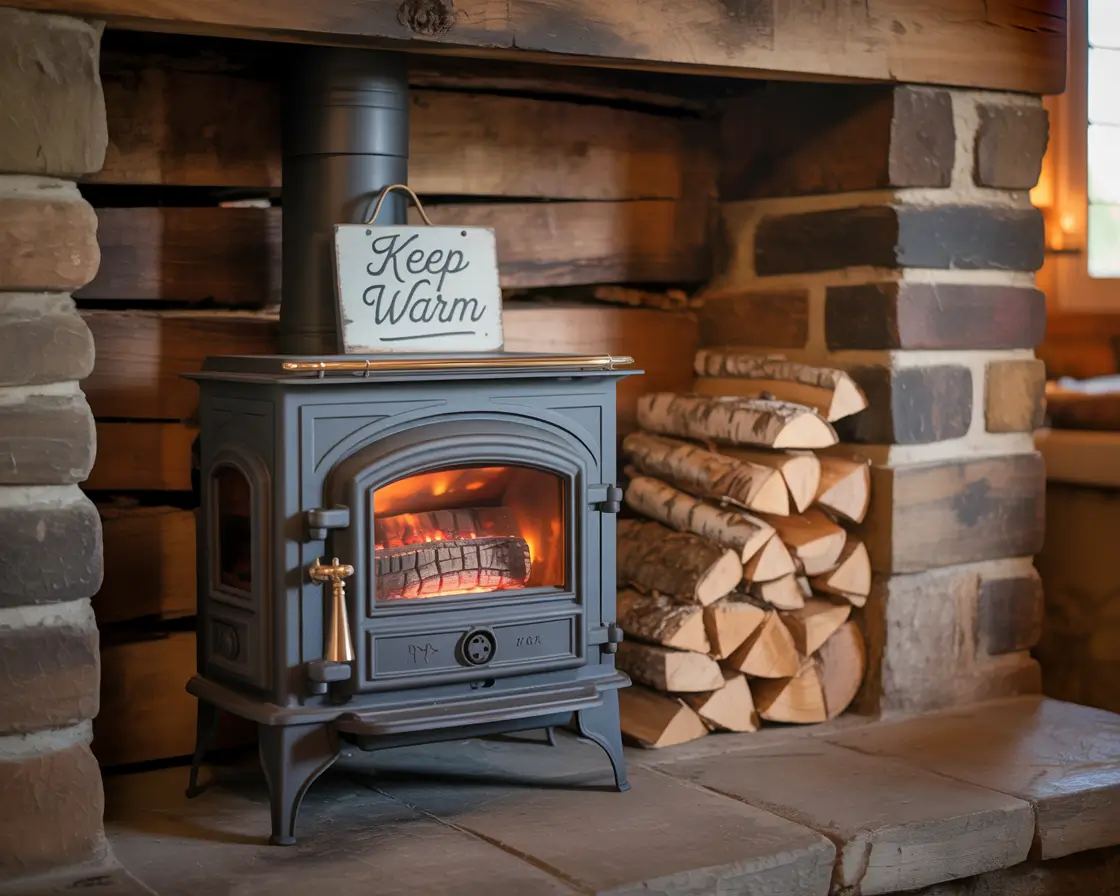
Preventing creosote buildup and reducing fire risk go hand in hand when it comes to stove pipe maintenance. By making small adjustments to how you burn wood and care for your stove, you can significantly reduce the chances of dangerous creosote accumulation and other potential hazards.
🔥 Burn Seasoned Firewood Only
One of the most important steps to reduce creosote buildup is to burn seasoned firewood. Firewood that has a moisture content higher than 20% produces more smoke, which leads to increased creosote formation in the stove pipe. Burning seasoned firewood (LSI: burning seasoned firewood) means using wood that has been properly dried or aged, typically for 6–12 months. Dry wood burns hotter and cleaner, producing less smoke and reducing the amount of harmful creosote that can cling to the inside of your stove pipe.
🌬️ Keep Fires Hot, Not Smoldering
Smoldering fires produce more smoke and create ideal conditions for creosote buildup. To avoid this, always aim to keep your fires hot and well-ventilated. Proper airflow allows the stove to burn efficiently, ensuring that most of the wood is consumed and not left to produce excess smoke. Make sure your air vents and draft controls are adjusted for optimal performance, and never overload your stove. A hot fire produces less smoke and, therefore, less creosote.
🛡️ Install a Chimney Cap
A chimney cap is a simple yet highly effective tool to keep your stove pipe safe and clear. It prevents debris, rain, and animals from entering the flue, all of which could lead to obstructions or corrosion. Installing a chimney cap is an easy and affordable preventive measure that helps avoid unnecessary cleaning and potential damage to your chimney system. Additionally, it can prevent downdrafts, which are when smoke or gases are blown back into your home.
🚒 Ensure Safe Clearance Around Stove
Safety isn’t just about maintaining your stove pipe—it’s also about ensuring your stove is safely situated. Always maintain at least 3 feet of clearance around your stove to avoid placing flammable materials too close. Keep things like newspapers, firewood, or curtains away from the stove to reduce the risk of accidental fires. It’s also a good idea to keep a fire extinguisher nearby for emergencies. Having an accessible fire extinguisher ensures that you’re prepared to handle small flames before they escalate.
EPA guideline page on wood stove maintenance:
https://www.epa.gov/burnwise

